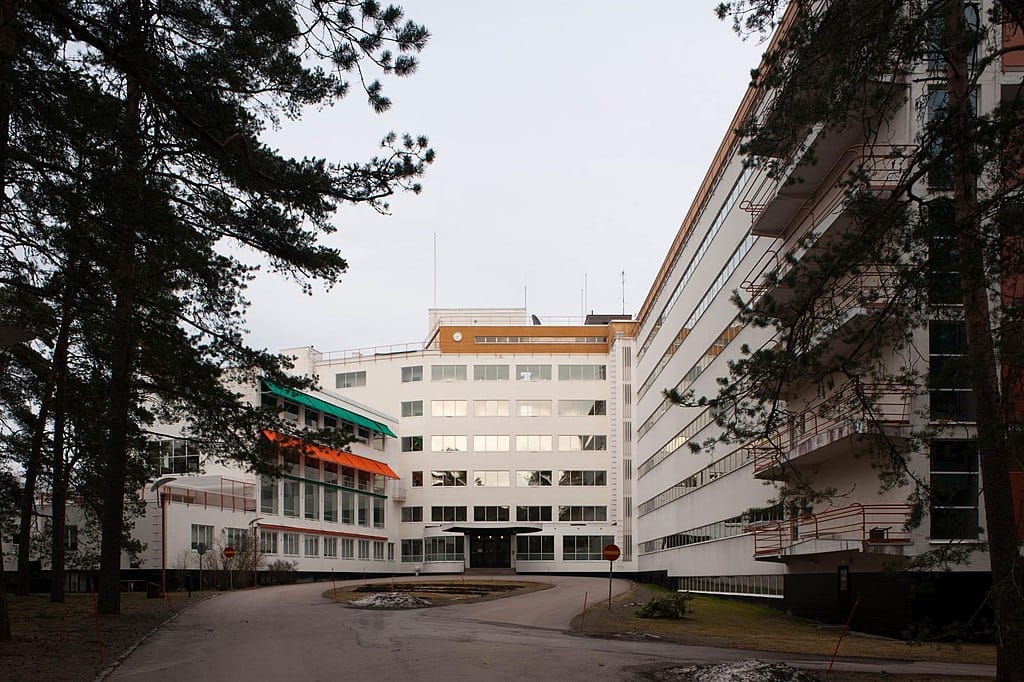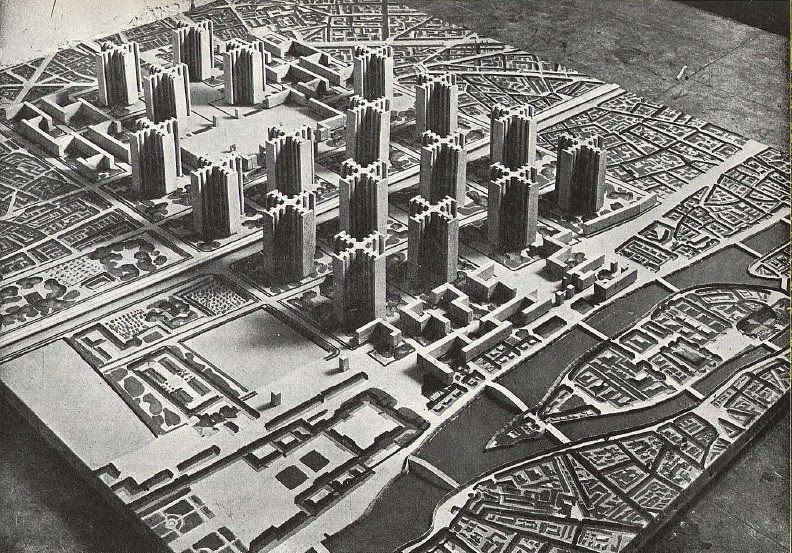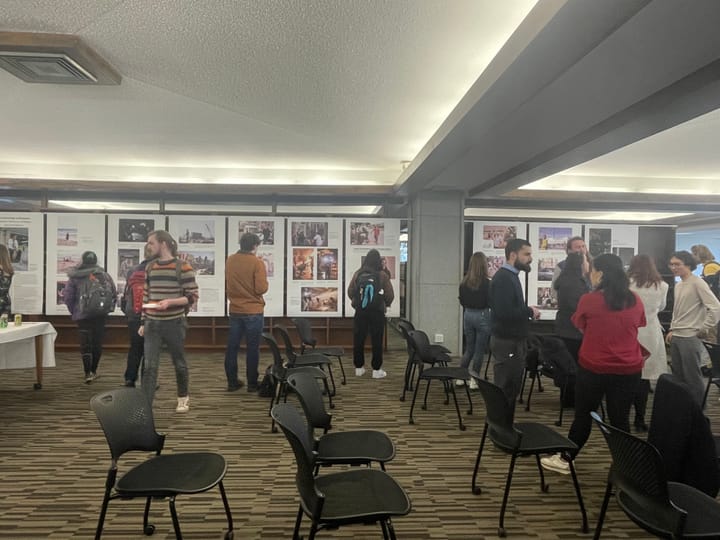Coping With Campus: Style Over Substance
Managing Opinion Editor Dustin Copeland ’25 discusses the potential impact of the pandemic on the future of architecture, which he hopes is full of love and ventilation.


Interpersonal intimacy is established foremost by proximity. It is far easier to become metaphorically close with someone whom you literally share space with — there’s a reason I had to specify which meaning of “close” applied. So gathering spaces do best when they provide ample room for people to become close with one another, to share air as well as their work, or their play. Fuller spaces feel more alive, charged by the humanity packed within them. For any socially-inclined person, it is natural to be made happy and comfortable by a space populated by living, breathing people.
And yet, exposure to such spaces has become anything but comfortable in the current era. Nothing more repulses even a socially-inclined person now than being enclosed with another person. We walk indoors with barriers between our mouths, and when we gather outdoors we do our best to make sure we do so given a wide berth. Crowds induce anxiety in a new, more existential way, for not only are they filled with social pressure, they are now breeding grounds for virus, for infection. For the past two years, intimacy has looked a lot like a death sentence.
This contradiction in the need for social space expresses itself whenever we wish to gather: 50 percent capacity limits, for example, were long tacked on as band-aids to our common areas. Spaces designed for many people have become necessarily underutilized, their functionality compromised by the nature of dealing with the pandemic. Space that is supposed to be collaborative and open now separates us from one another, encourages distance, creates fear. The very openness and efficiency that once were the primary selling points of modern spaces now reveal the flaws in their form, suggesting that a new kind of space is necessary, one that can foster intimacy even in the face of an antisocial pandemic.
I mean to propose no novel ideas here — allowing disease to influence the course of architectural and design philosophy has plenty of precedent. Even applying that history to Covid isn’t new: I remember reading a New Yorker article from 2020 about the future of architecture that predicted many changes to interior design in the wake of lessons learned in quarantine amid the many terrifying months of the pandemic in that city. It did this based on a history of disease-influenced architecture, as it posits that the Modernist movement of the early 20th century (that has enormous influence even today) was founded partially upon coping mechanisms for tuberculosis infection. And while I think that reducing the history of Modernism to any singular cause is a little ridiculous, western conceptions of tuberculosis are indeed representative of many basic assumptions about humanity that inform Modernist thought.
Western medicine as a whole became more and more obsessed with the body as a machine throughout the 19th and 20th centuries — comparisons of the human body to automata are commonplace in European literature of the time, and the very idea of “fixing” a person with a “cure” to what ails them smacks of machine language. This machine conception of human existence is essential to Modernist building philosophy, which uses the principles of mass production to create the best way to live. This assigning of a universally-true “best” way for every human to live is, I think, the primary failure of Modernism, especially when it comes to residential space.
The New Yorker article’s primary changes to architecture’s future fix the problems with Modernist prescriptive utopianism. They suggest things like movable walls to promote versatility in space, separations between spaces like the kitchen, dining room, and living room, and greater access to the outdoors. Movable walls, besides being flexible for different people’s needs, allow a quarantined family to rearrange space when staying in a confined home for too many weeks eats at their mental health. Separations between common spaces allow for a mental separation of spaces and their purposes, while creating more isolated “cozy” space for inhabitants to escape into. The outdoors provides for the universal need for sunlight and for access to fresh air even when leaving one’s front door seems impossible.
The article spends time defining an “existence minimum,” an amount of things that is the absolute minimum necessary for human survival — something that was sought after constantly by great architects and idealists throughout Modernism’s preponderance. Then the article defines an “existence maximum,” the suite of accessories we carry around at all times that packs as much world into as small a space as possible. Finally, the article asserts that neither of these serve as effective means of existing given the situation of the pandemic, and that architecture might need to reject the “clean, white, anonymous smoothness of contemporary minimalist modernism” in favor of a “textured hideaway, like an animal’s den.”
Duh! That’s like saying that instead of living like robots, maximizing the efficiency of our residential space, we should live as if we were literally people. The travesty of the Modernist movement (in a tragedy that extends far beyond architecture) was that the human body was reduced to a bag of chemicals which had a life not unlike a mathematical equation, theoretically optimizable for efficiency. It is common sense that we should be treated like humans in the space that we call our home. We should be able to rearrange our space if we need a change! We must, as the article says, have a home “full of reminders that the rest of the world still exists.” That should not be a revelation! Living in a real, inhabited world is an unalienable right, not a radical new design philosophy.
That change doesn’t stop at our living space. The philosophies of humanism and environmentalism that inform the outdoors-connected dens of the future apply equally to work and public space. In a library, working efficiency should no longer be the marker of a “good” space, because humans do not respond to functionalist optimization. All the efficient design in the world cannot promote productivity if people aren’t happy in or cared for by their workspace. It is beauty that humanity responds to, beauty that makes a space happy. So a library, study room, or classroom designer should reach for beauty above all things.
Of course, beauty can come in many forms, but I believe that it is best measured by its promotion of happiness: sunlight, good craftsmanship, and high-quality materials are beautiful things. Indeed, space is most beautiful when it is clear that those building it cared deeply about what they were creating. Architecture should always be done out of love, for love is the basis for human-conscious space. Textured dens filled with the real world should be the basis for all of our spaces — close to the outside, individual space, excellent airflow. In other words, as we move into the future, space must pursue humanity above all things.




Comments ()